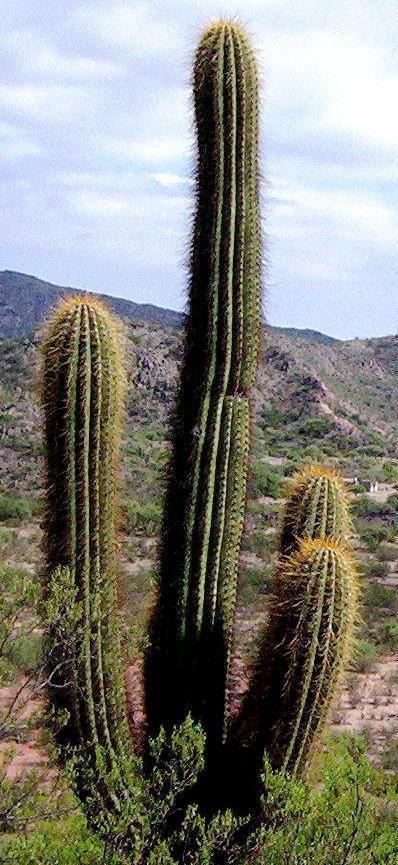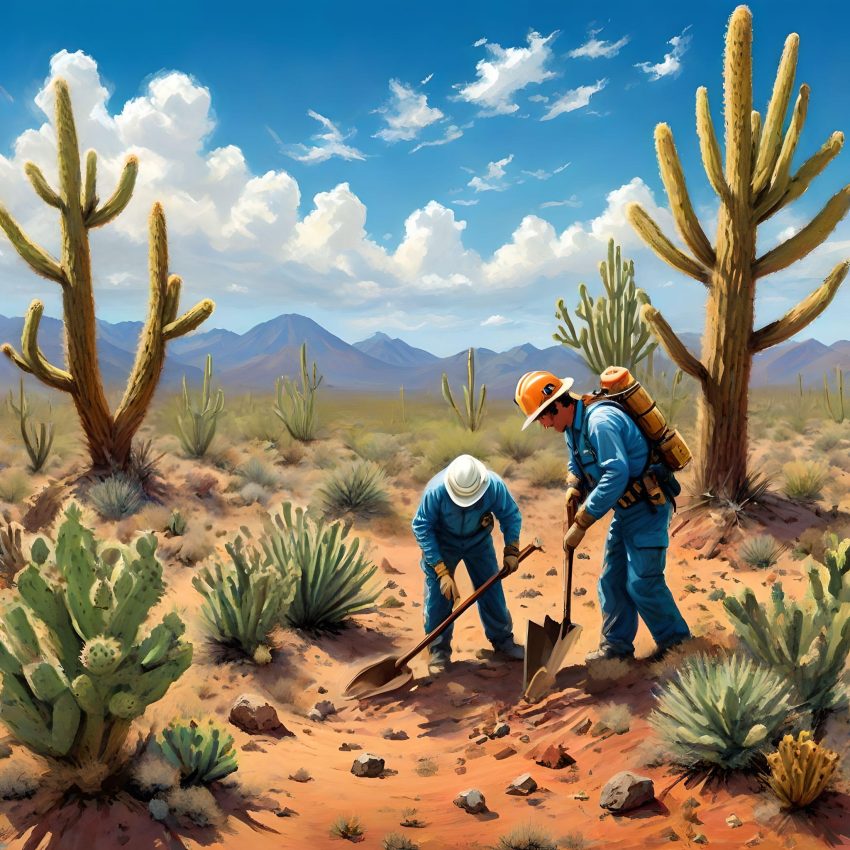![]()

Featured image above: An AI text-to-image impression of two plant rescue workers with shovels, picks and iron digging bars who unearth and relocate endangered species.
Note: For the sake of illustration, we have borrowed a wonderful desert cactus photo from cactophile, Robert Peel. (KP)
Desert Salvage
Thanks to Mary Scott, President and Newsletter Editor of the C&S Society of Alberta, Canada for sending an article which contained the following story. Not being able to find a contact to ask for permission to reprint this, it is in your Editor’s own words (Marina Welham).
As summer gardening work slows down for all of us, it is the busiest season of all for people who salvage desert trees. These are called ‘devegetation contractors’ who work ahead of the bulldozers to save mature ironwoods, palo verdes and mesquites from the destruction of plant habitats due to new houses being built and road construction.
This is the ideal time to do this work since the warm summer temperatures encourage rapid root regrowth that is so critical to a plant that has just been uprooted.
The ‘trees’ are transplanted in several stages to lessen shock to the plants. They are first pruned of about 40% of their foliage. Then the workers dig carefully along the sides of the root ball and strap four wooden panels together to cradle the roots in a kind of bottomless box. The trees are left this way for a couple of weeks during which time they are well watered and fertilized. Finally, the roots are cut and a bottom is added to the box.
There is high demand for salvaged trees because they possess a certain character that nursery-grown trees lack, and give the landscape instant maturity. A desert-dug specimen tree starts at a few hundred dollars and can run into the thousands. This kind of money is out of the reach of most people, but there are often other desert plants which can sometimes be had just for the labor of digging them up. Before you dig, however, you must first have the very important native plant tags which cost only a couple of dollars each, issued by the Arizona Commission of Agriculture and Horticulture granting permission to move the plants.
There have been areas where thousands of acres of desert has been at risk either from construction of dams or as mentioned, or housing and road construction. People have been allowed into these areas to salvage cacti and the response has been overwhelming. In one case, more than one thousand people lined up to buy tags and begin the hunt for plants in the rocky desert terrain. The plants they were after were Teddy Bear Cholla, Hedgehog Cactus and Buckhorn Cholla. Shovels, picks and iron digging bars were used to bag the quarry. Someone with several strong friends could even carry off a saguaro ‘spear’ which is what they call a young plant that has not yet grown arms.
It is estimated that 80,000 cacti were salvaged in about five months. Granted, this sort of free-for-the-taking event doesn’t happen all that often, but when it does, desert-dug cacti can generally be had from a local nursery at prices starting at about $25.00 for a barrel cactus.
These newly transplanted cacti should be watered after a few weeks and once or twice during their first summer. It may take a while for the relocated plant to adjust, but in time, new stems will grow and the plant will produce its white, gold, chartreuse or magenta flowers.
Rescued from The Wayback Machine.

